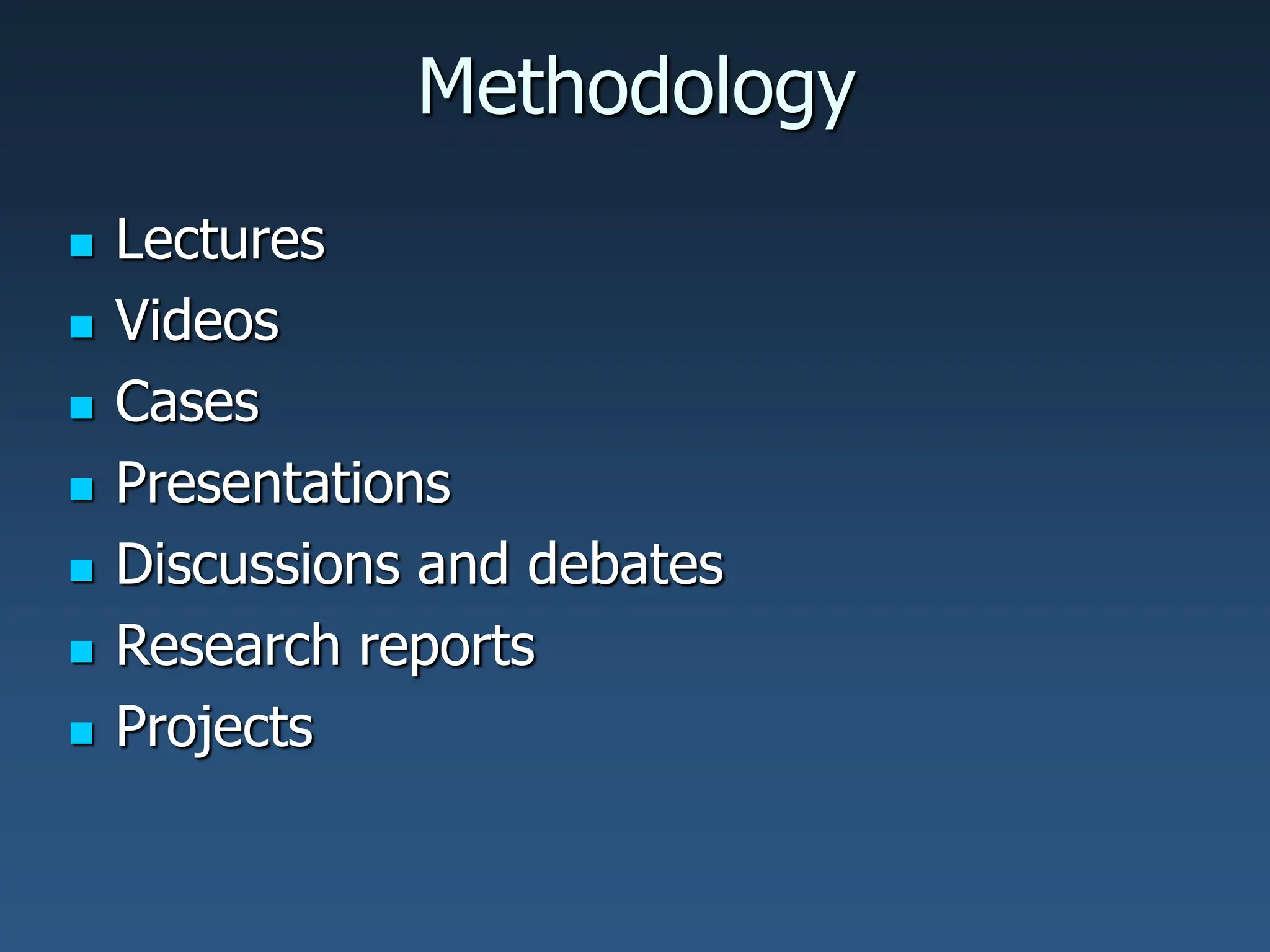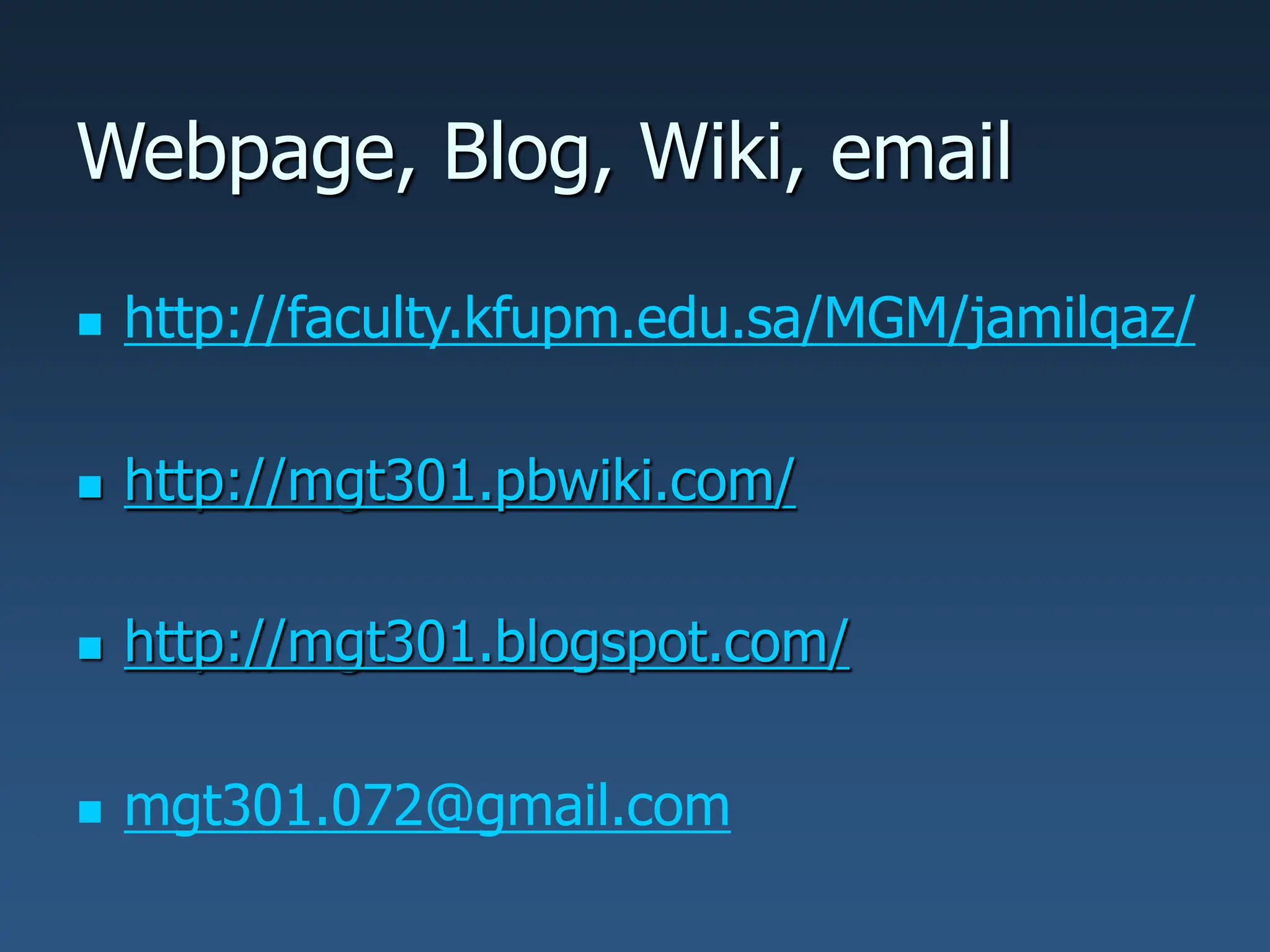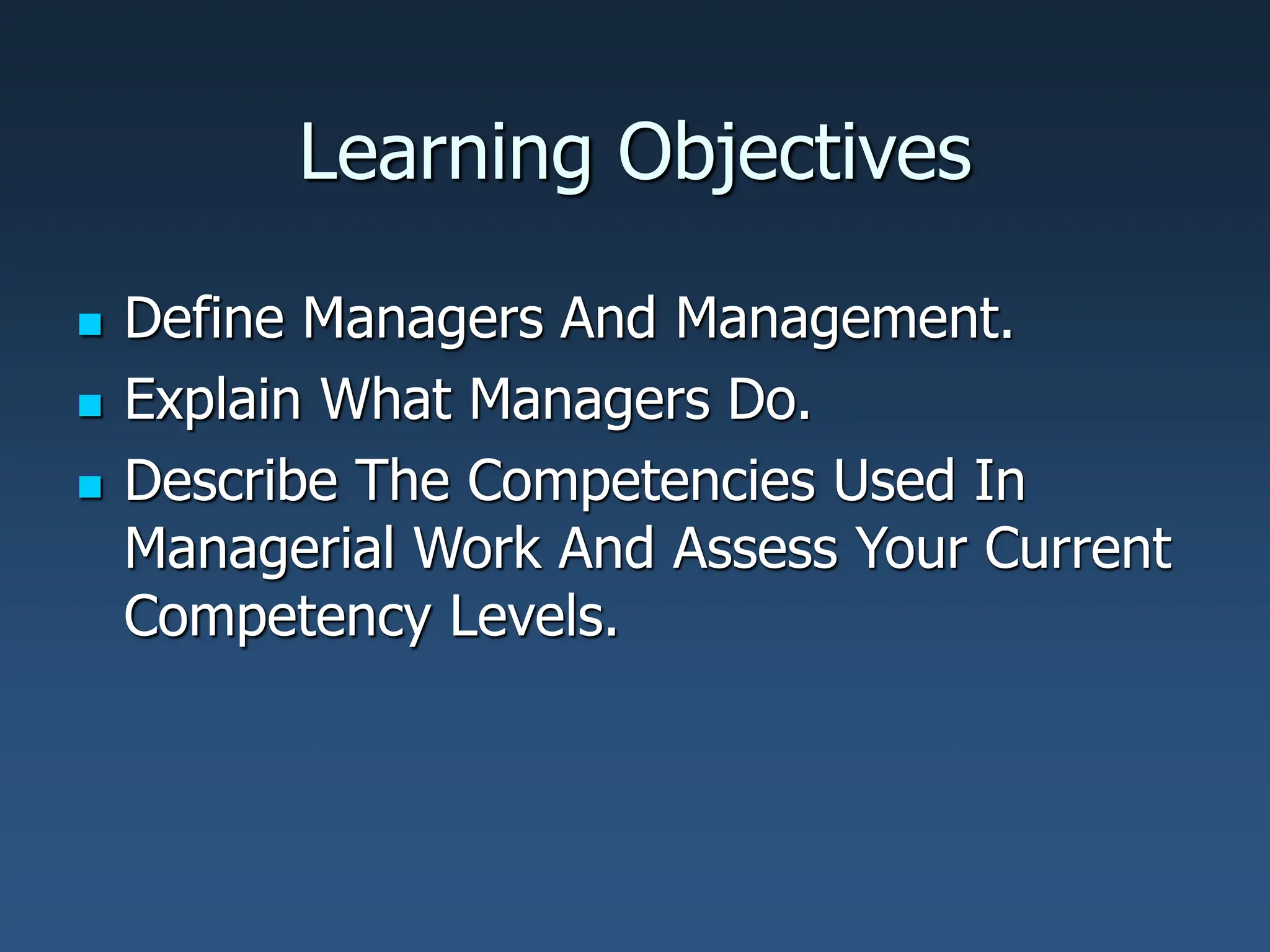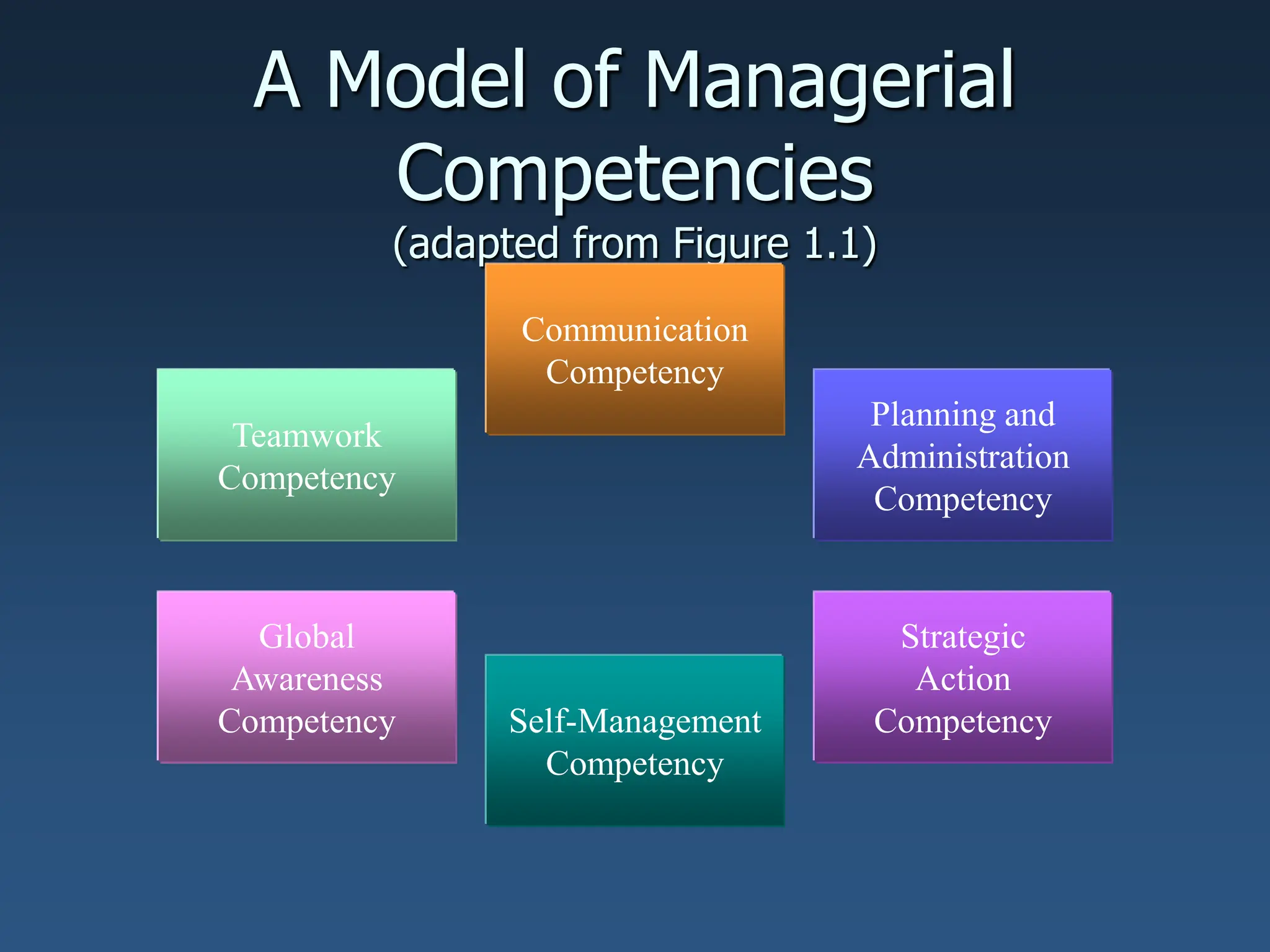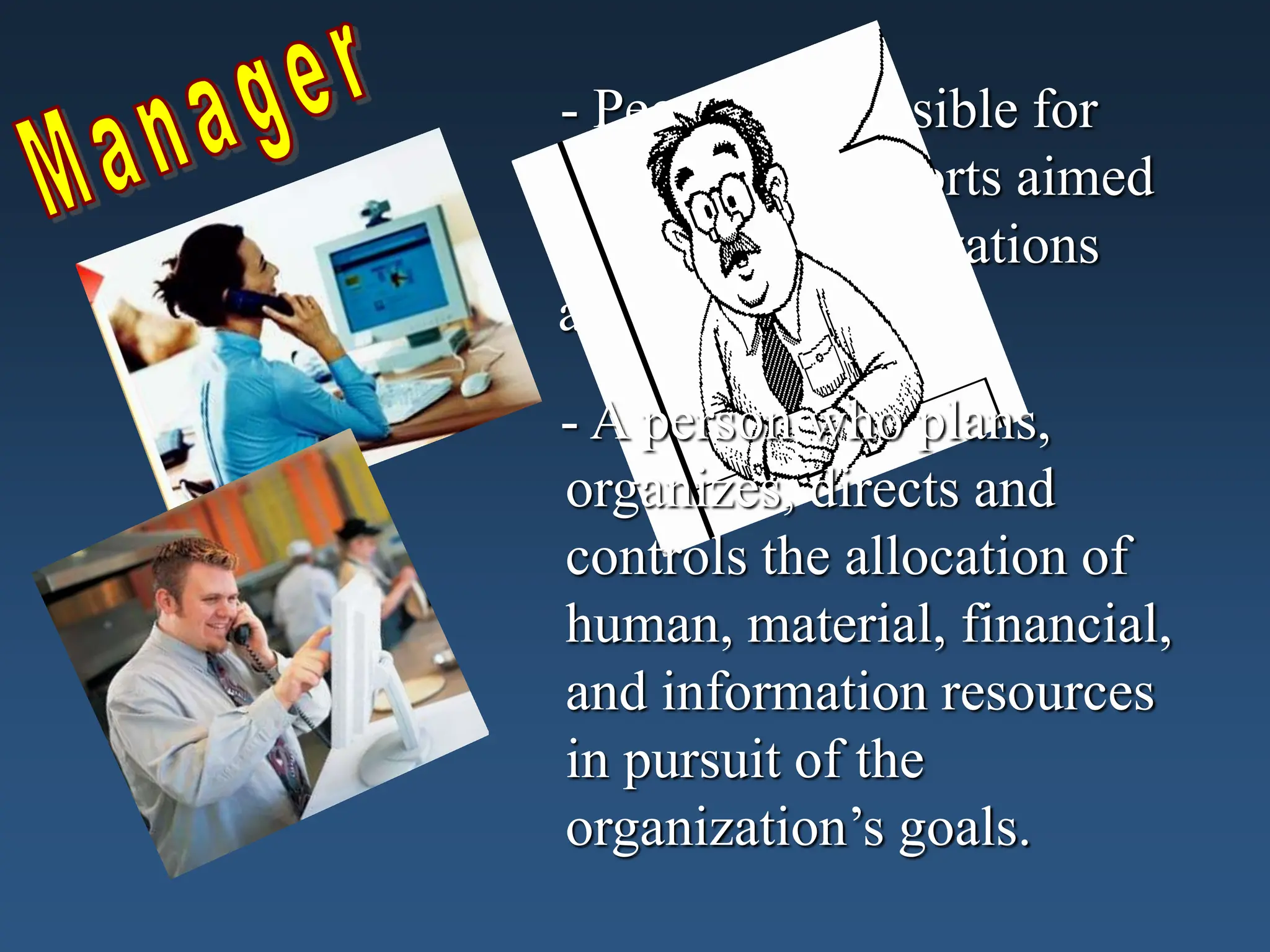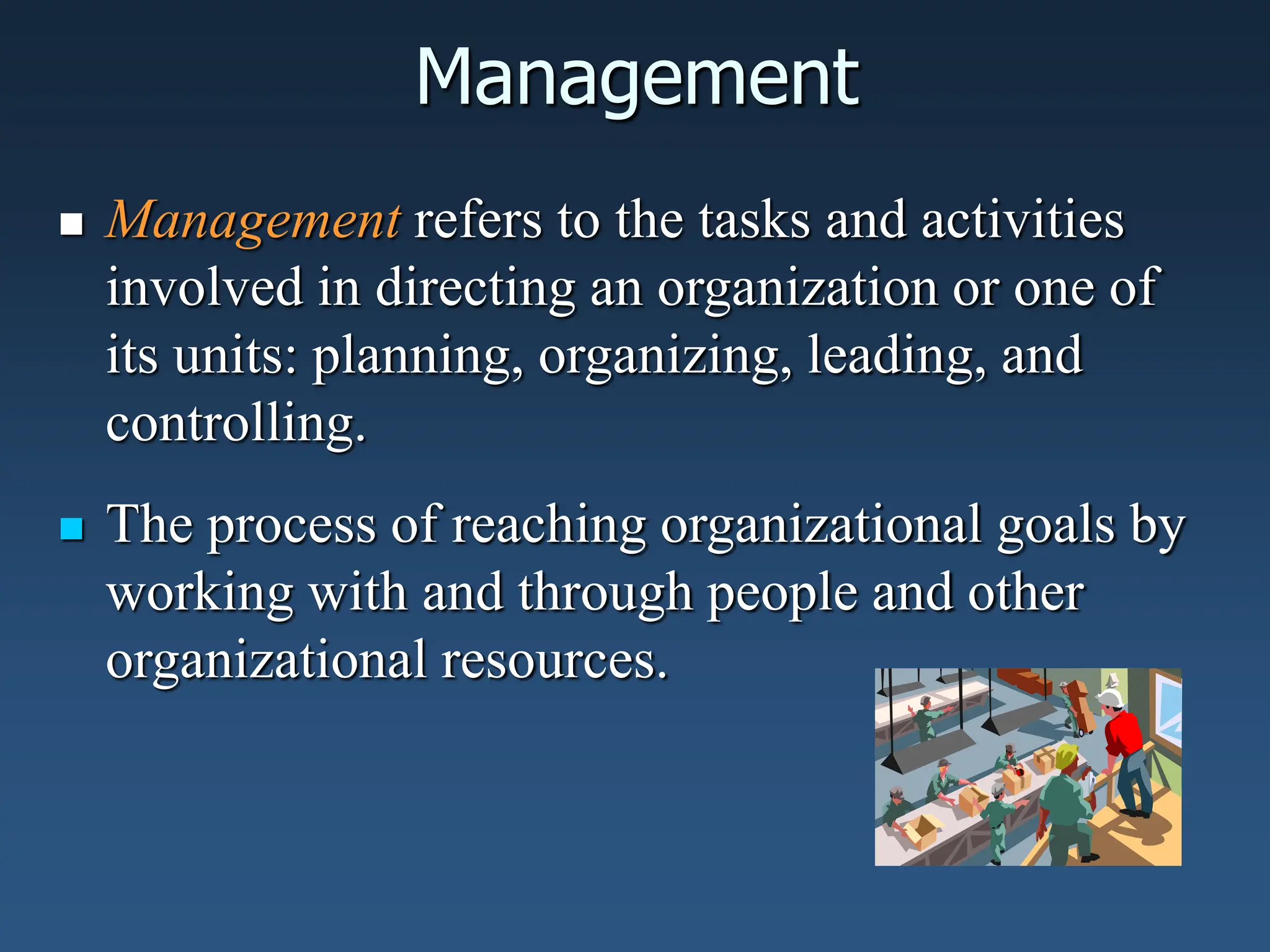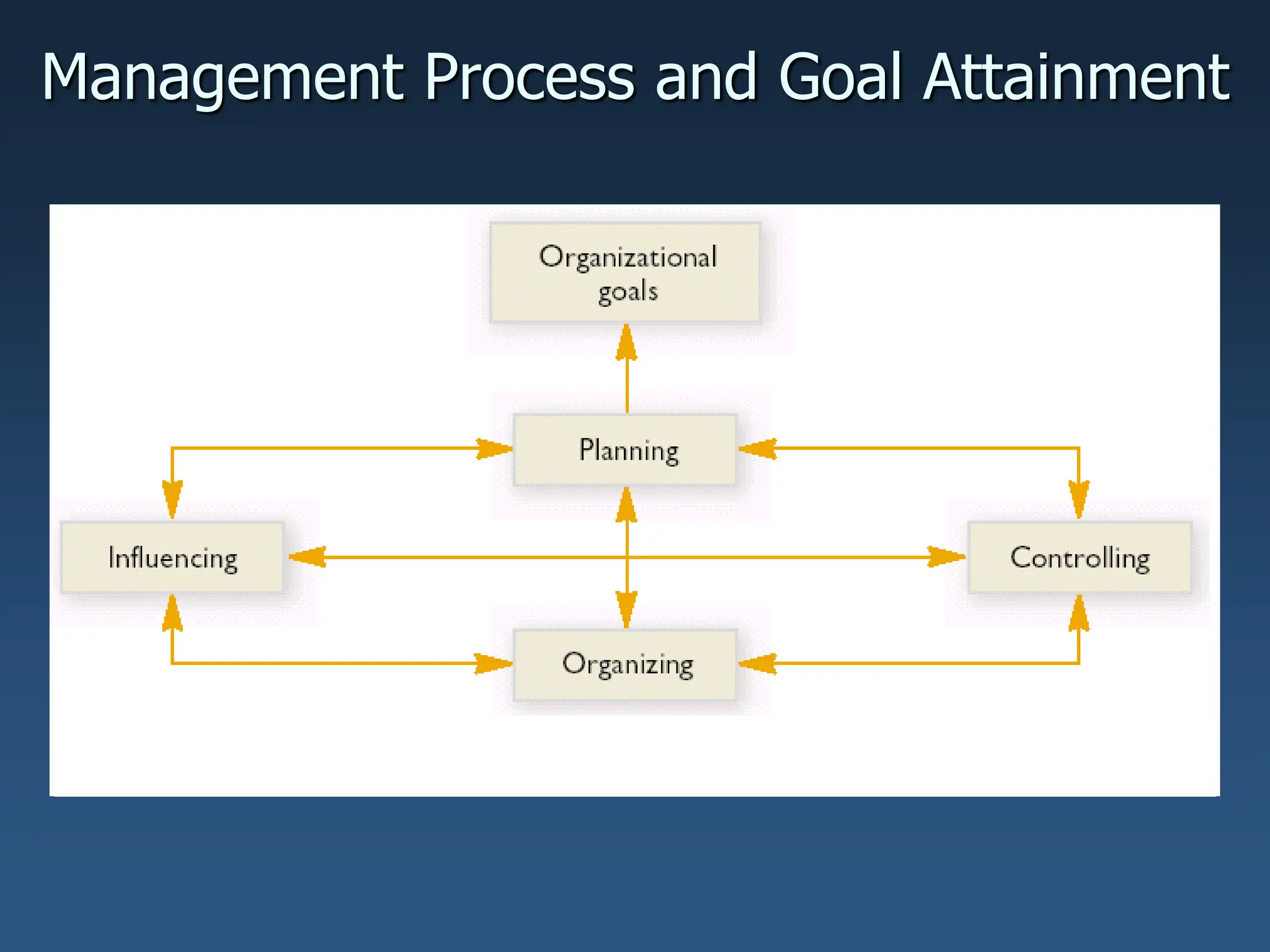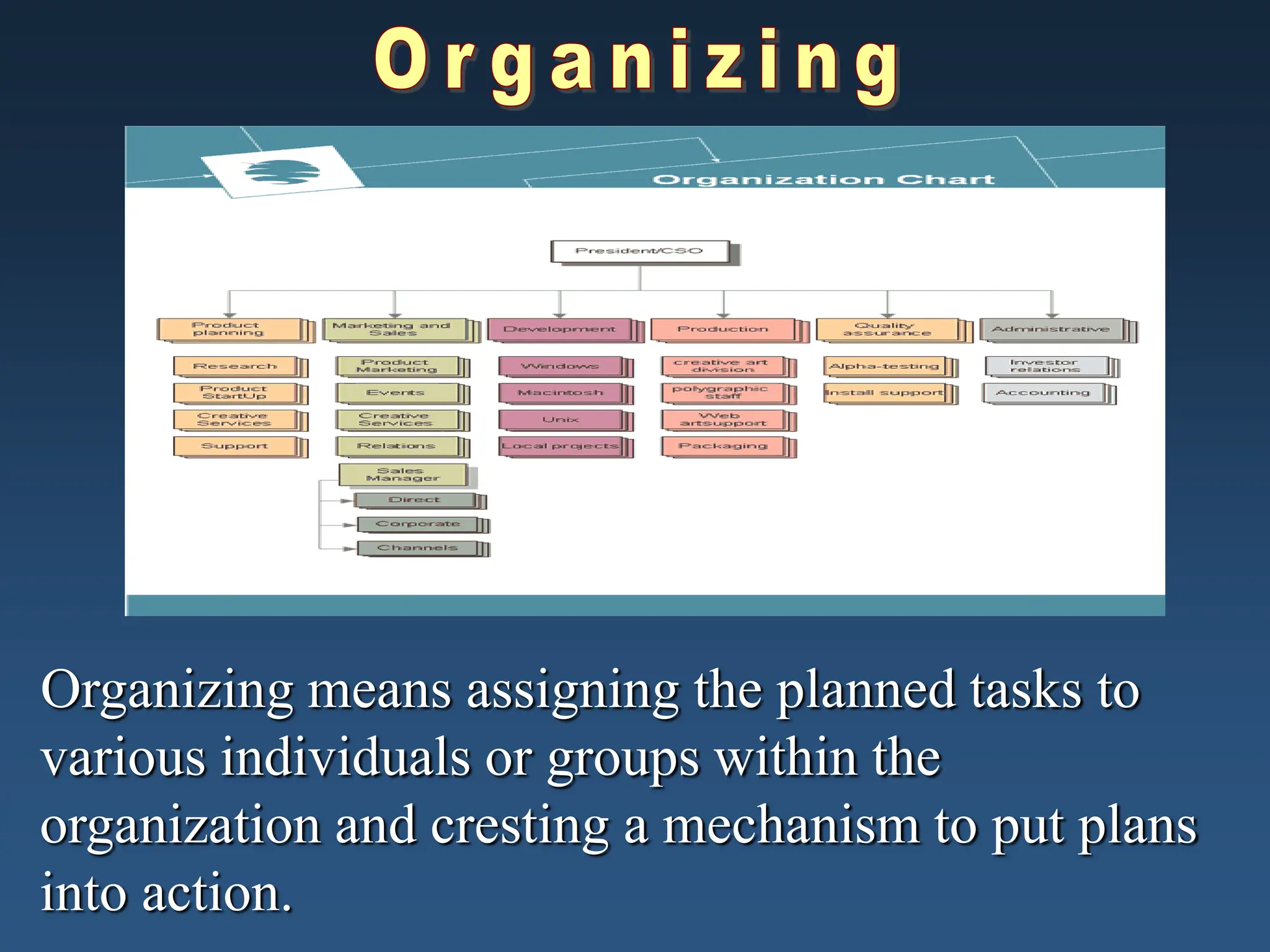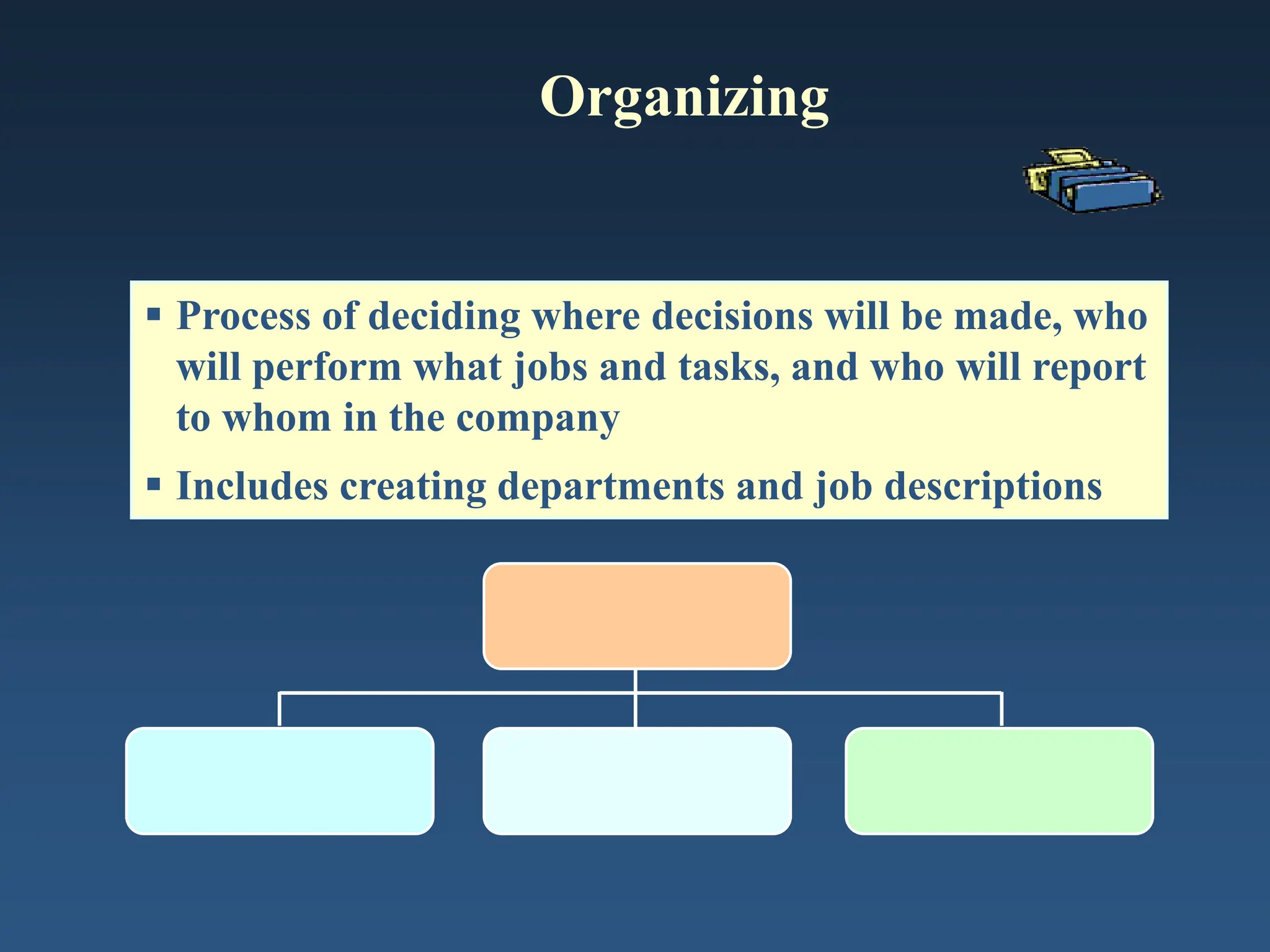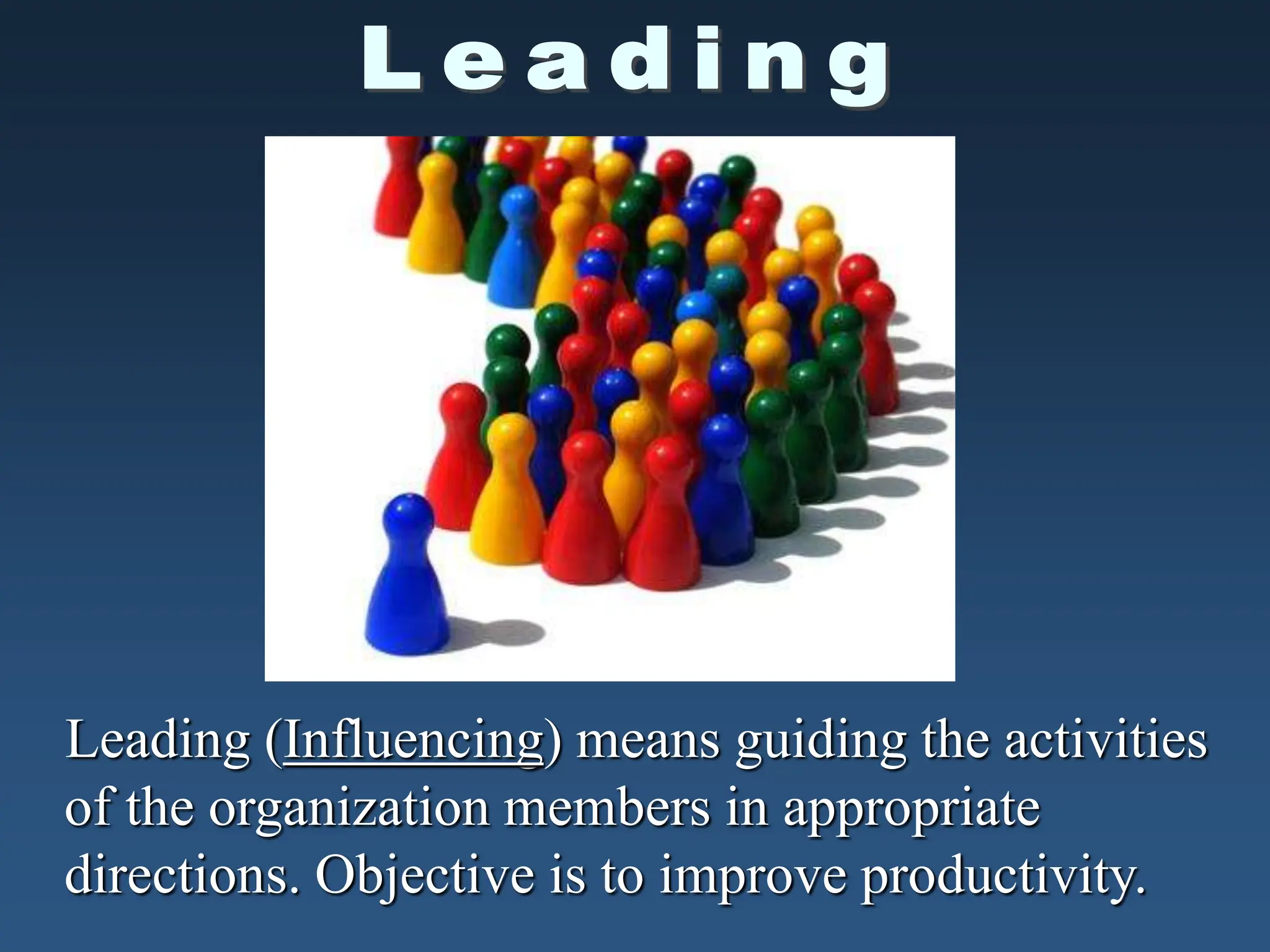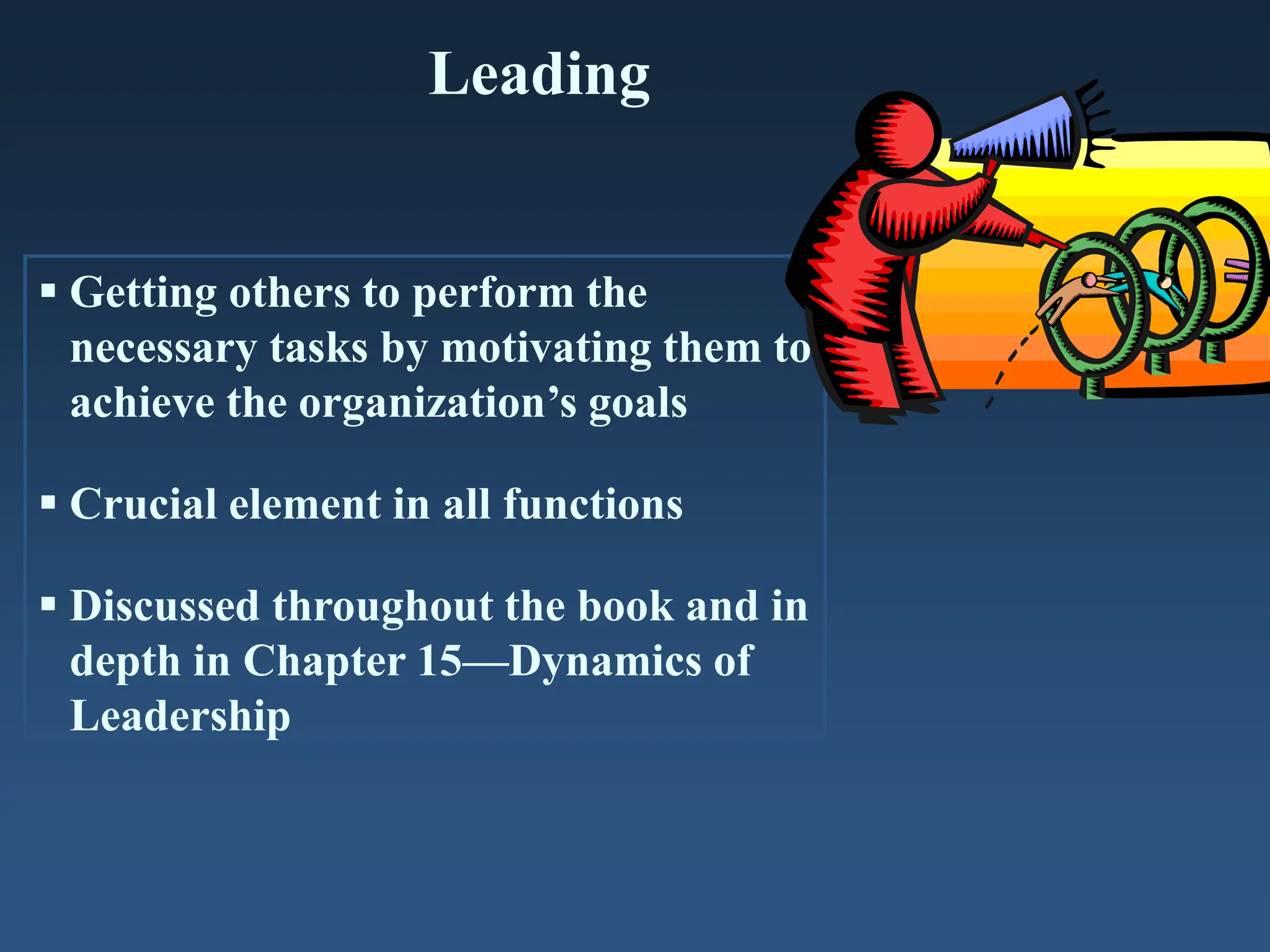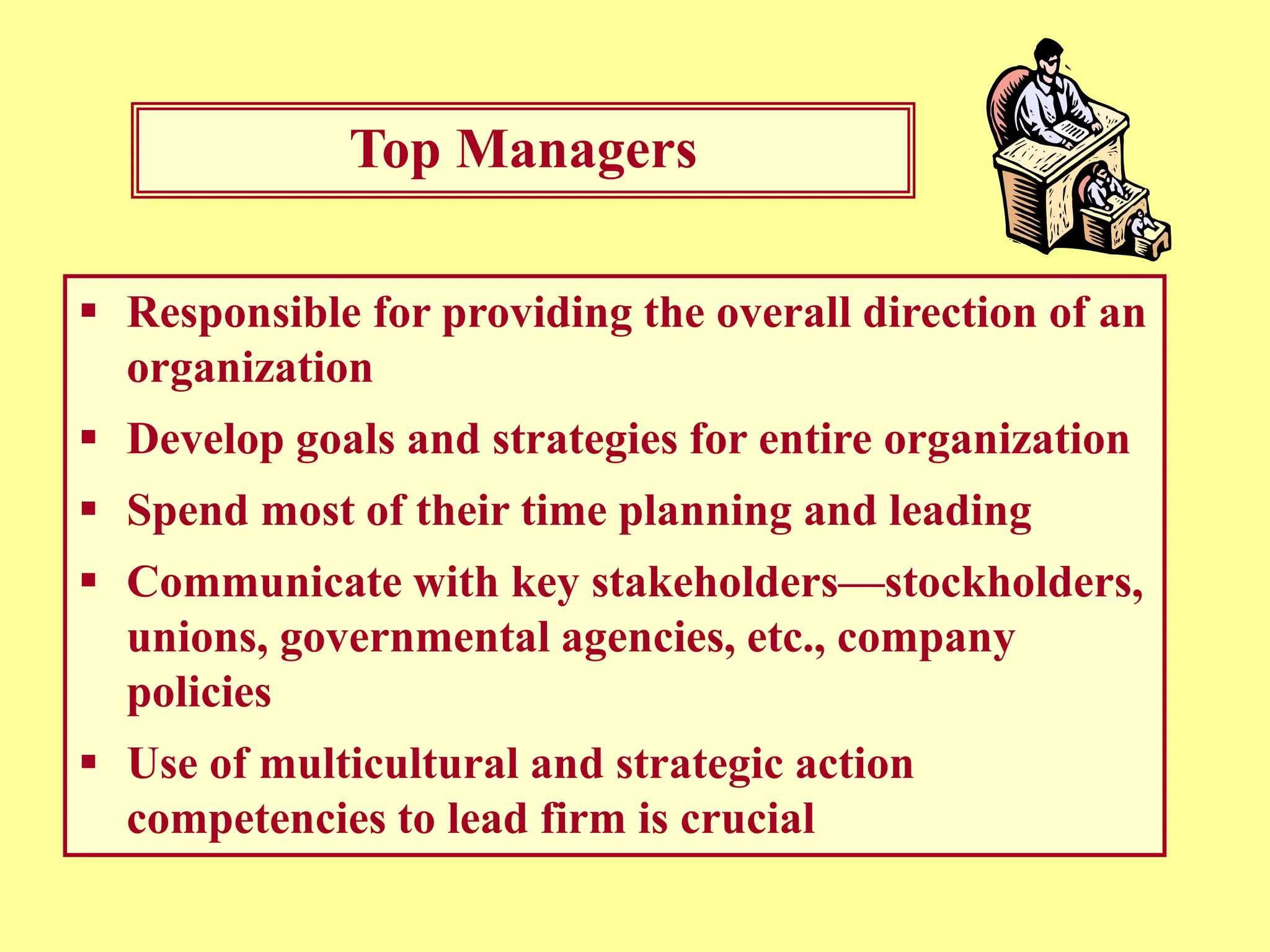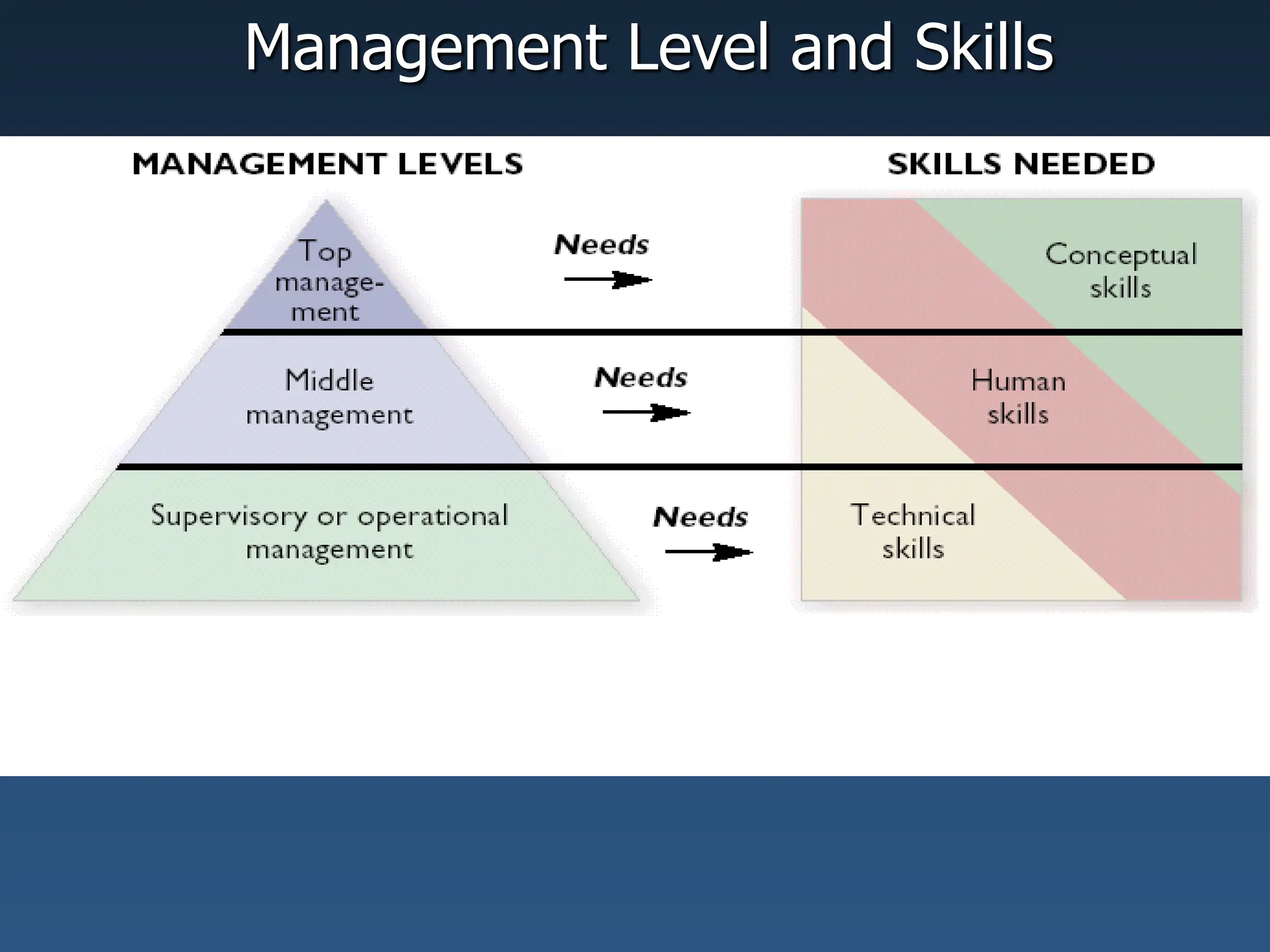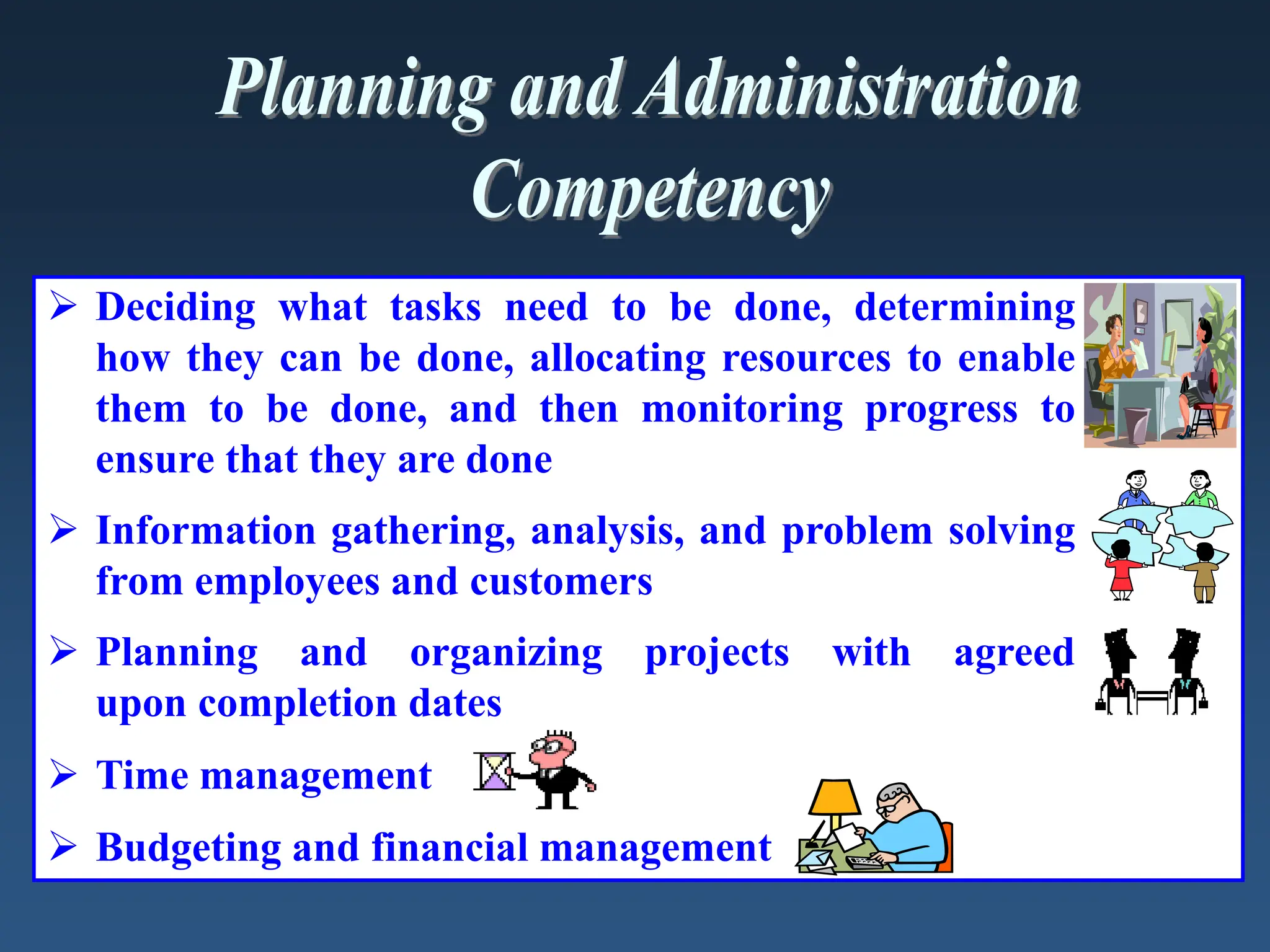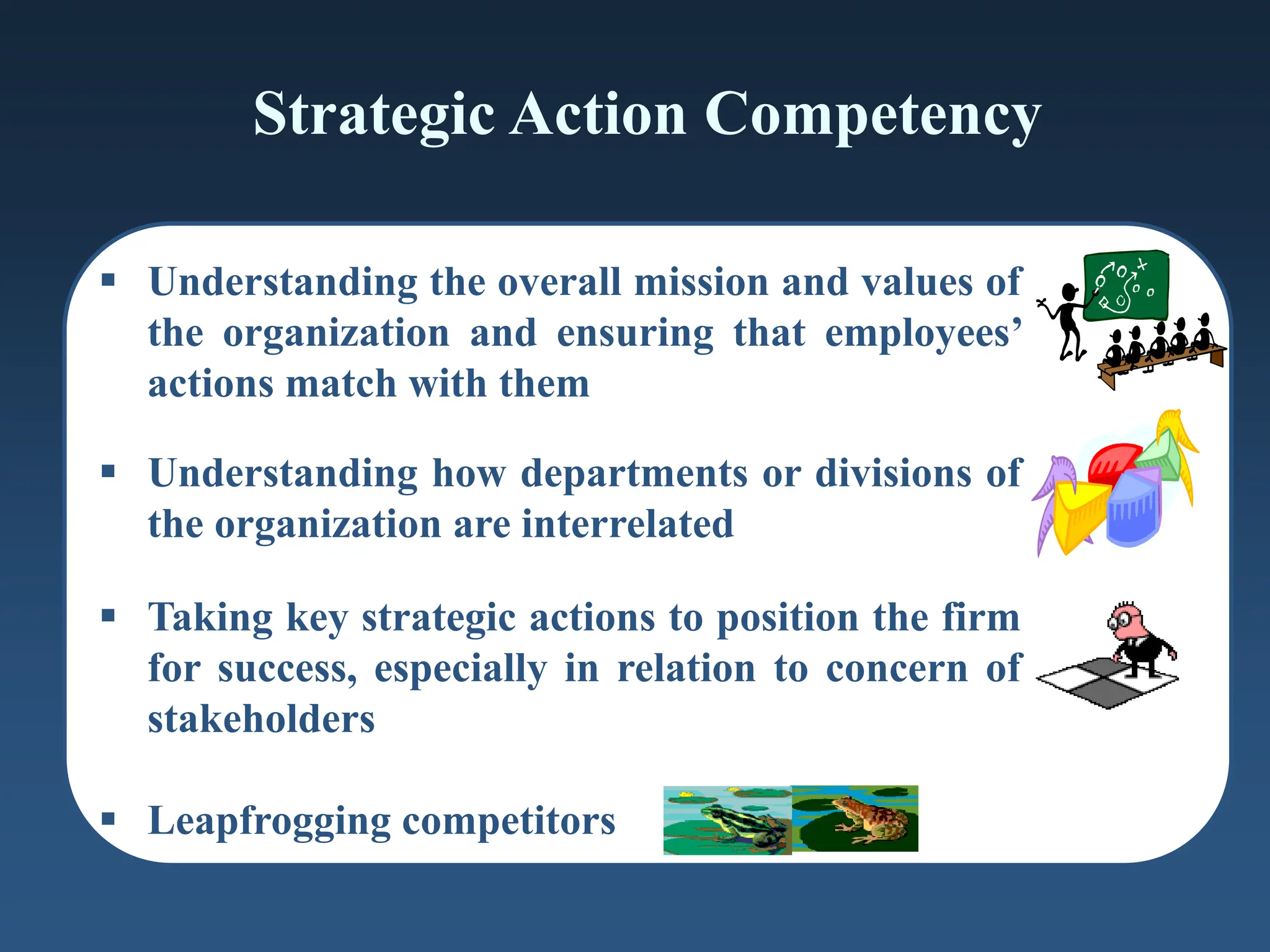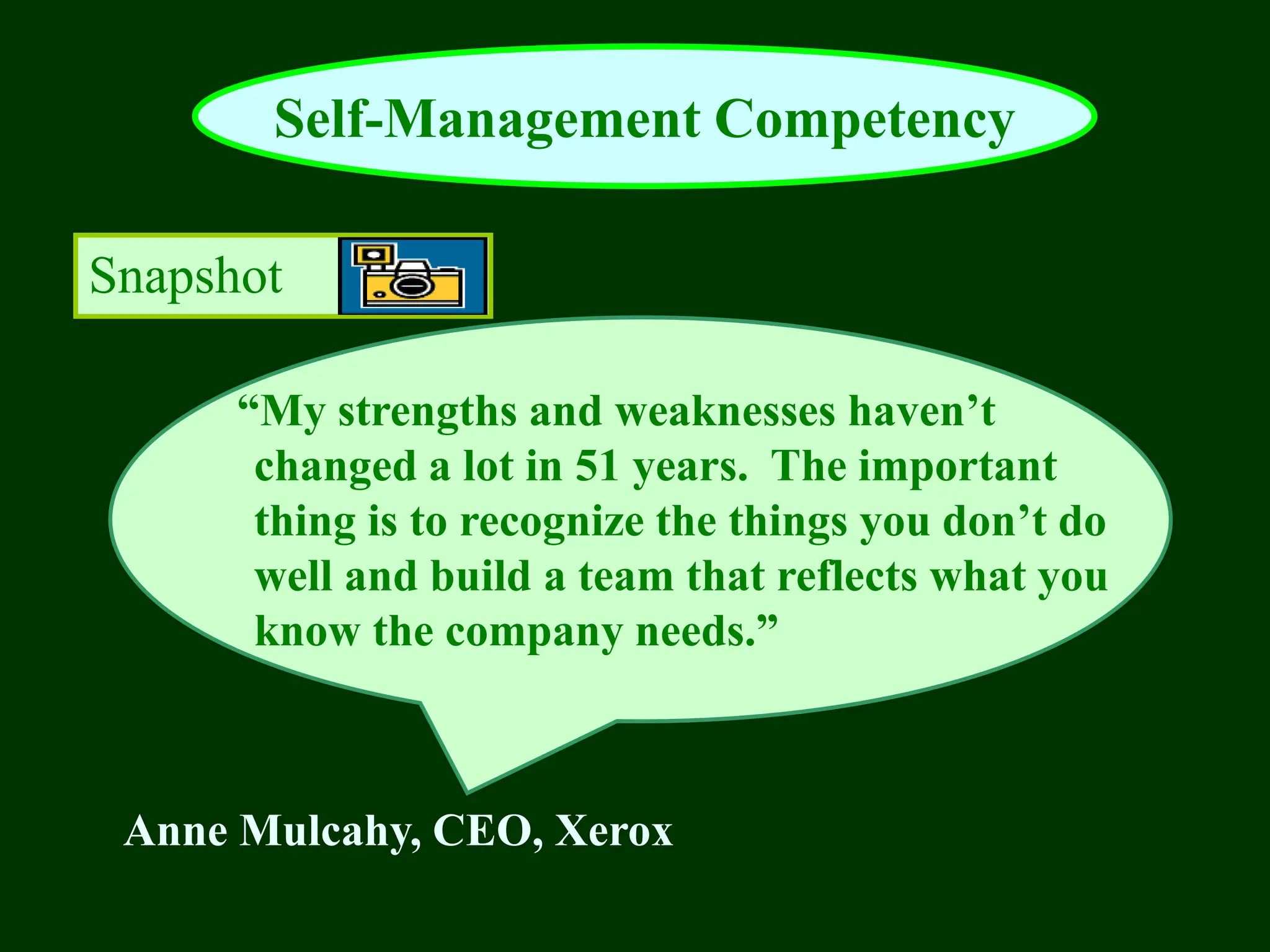This document outlines the principles and methodology of management, including defining managerial competencies, describing management functions and levels, and identifying the six core competencies of communication, planning and administration, teamwork, strategic action, multicultural awareness, and self-management. It provides learning objectives and concepts for understanding management, organizations, and the management process of planning, organizing, leading, and controlling resources to achieve organizational goals. Examples and models are used to illustrate managerial competencies and the levels of management from top to first-line managers.


